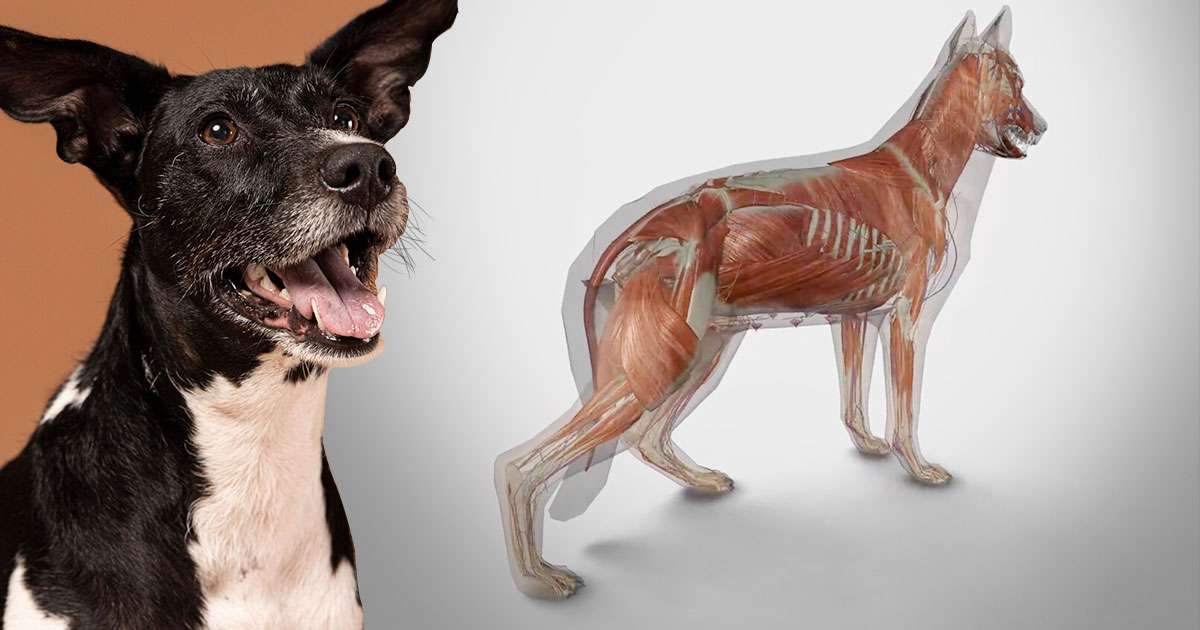Signs & Symptoms of Muscle Atrophy in Dogs

Muscle atrophy, or muscle loss, can happen for different reasons. When a muscle isn’t used, it can shrink slowly over time, which is called disuse atrophy. This often occurs when there’s pain from conditions like hip dysplasia or arthritis, so the dog avoids moving that muscle. Another type, neural atrophy, happens when nerves in the muscle are damaged, which can be permanent or temporary. Conditions like nerve diseases or injuries can cause this. Dogs with slow muscle loss should see a vet soon, while sudden and severe muscle loss needs immediate care as it might signal a serious issue.
How to Spot Muscle Atrophy in Dogs
As dog owners, it’s crucial to notice signs of muscle shrinkage early. Pay attention to how your dog acts during walks. Do they seem less comfy or stiffer than usual? Are they in pain? These could mean muscle shrinkage. Also, watch for:
- Hind legs look thinner
- More use of front legs
- Fast weight loss
- Crossing legs or dragging paws
- Muscles feel soft underfur
Associated Symptoms
Muscle wasting in dogs often comes with other signs, like:
- Weakness
- Limping
- Coughing
- Gagging or dry heaves
- Joint pain or swelling
- Trouble with exercise
- Hard time moving around
- Paralysis
- Losing weight
- Difficulty walking
Possible Causes of Muscle Atrophy in Dogs
Muscle atrophy can happen because of different conditions, such as:
- Muscle Weakness: Dogs may experience weakening of their muscles over time.
- Joint Pain: Some dogs suffer from arthritis, causing discomfort in their joints.
- Tick Paralysis: Certain ticks can cause paralysis in dogs if not removed promptly.
- Back Problems: Chronic issues with discs in the spine can lead to pain and discomfort.
- Weakness Disorder: Myasthenia Gravis can affect a dog’s ability to move and function normally.
- Hormonal Imbalance: Cushing’s Disease and Diabetes Mellitus are conditions that affect hormone levels in dogs.
- Thyroid Problems: Hypothyroidism can disrupt a dog’s metabolism and energy levels.
- Nerve Tumors: Dogs may develop tumors along their nerves or spinal cord.
- Muscle Inflammation: Polymyositis and Masticatory Myositis are conditions where muscles become inflamed.
- Accidents: A dog may start losing muscle mass due to traumatic injuries, like a brachial plexus avulsion injury, that can occur from accidents.
It’s also common for older dogs to experience muscle loss as they age.
Breeds at Risk for Muscle Atrophy
Some breeds are more likely to have muscle problems leading to muscle shrinkage, known as ‘myopathy’. These include:
- Big dogs like German Shepherds
- Sighthounds like Greyhounds, are known for hunting with their sight and speed
These breeds might be prone to conditions like Fibrotic Myopathy, which weakens thigh muscles, Centronuclear Myopathy, causing muscle loss in young dogs, and other disorders leading to muscle waste or loss.
Risk Factors of Dog Muscle Deterioration
Muscle wasting is common in dogs, but it varies based on the disease, how bad it is, and what might happen next. For example, diseases like Cushing’s or hypothyroidism make muscles break down more, slowly getting worse. Usually, it’s the muscles that help them stand and move that are affected. Sometimes, certain diseases target specific groups of muscles, like the ones for chewing.
Diagnosing Dog Muscle Atrophy
To find out about muscle shrinkage, vets:
- Physical examination
- Do regular blood and urine tests
- Take a small piece of muscle or nerve for biopsies
- Electromyography to check how muscles work
- Tensilon test
- Diagnostic imaging using X-rays, CT scans, or MRI scans.
Treatment Options
Treatment for muscle problems depends on what’s causing them. It might include:
- Pain medicine
- Drugs to reduce swelling
- Steroids
- Antibiotics or medicine for parasites
- Surgery for bad joints or spine issues
- Other times, conservative management, like helping the dog lose weight, managing how much exercise they get, or doing water or physical therapy, can help. Also, giving them supplements for their joints can make a difference.
How can you help if your dog is losing muscle mass?
Once you know why your dog is experiencing muscle loss, and have established it’s Muscle Atrophy and not something serious, there are a few ways to help:
Exercise
As mentioned earlier, exercise is super important for building muscle in your dog. So, grab that leash and go for a walk! If your pup has trouble being active, take it easy with short walks instead of long ones. And if you’re unsure, talk to your vet about a good exercise plan.
Healthy Diet
Adding extra weight can make muscle shrinkage worse because it puts more pressure on your dog’s muscles and joints. To help, limit treats, feed your dog a balanced diet with lots of protein, and avoid giving them human food. A healthy dog is a happy dog!
Deal with Muscle Atrophy to Ensure Your Pup’s Wellness
If you notice signs of muscle shrinkage in your dog, such as weakness, limping, or weight loss, don’t ignore them. Take your furry friend to the vet for a check-up as soon as possible. By catching muscle atrophy early, you can help your dog get the treatment and care they need to stay happy and healthy for years to come. Your dog relies on you to take action and ensure their well-being.

